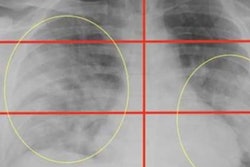
The recent Society for Imaging Informatics in Medicine (SIIM) annual meeting in Denver, Colorado, U.S., offered a unique opportunity to assess the progress of enterprise imaging (EI) adoption. Here are our key takeaways in summary from a busy schedule of seminars, vendor meetings, and industry expert discussions.
1. Enterprise imaging is hard.
Across several discussions, sentiment suggested many healthcare providers hit pause to take stock of their EI strategy. In the U.S., the "hangover" from massive investment in enterprise electronic health records, frantic hospital consolidation, and a changing legislative environment have limited enthusiasm for embarking on complex EI implementations.
Elsewhere in the world, some projects were going ahead, either in smaller clusters or large regional deals, but again, progress has been slow. Why? Providers now better understand the concept of EI and are increasingly clued-up that it is not something that can be purchased "out of the box."
 Stephen Holloway.
Stephen Holloway.In large health organizations, EI implementation is a massive, risky undertaking. The variety of data types and standards, legacy applications, clinical user groups, changing care models, security concerns, and potential vendor partners is difficult to navigate for any organization. Moreover, the decision-making process is more complex, increasingly spread across hospital executive leadership, as is the scale and impact of EI on the broader operations of the health provider.
Therefore, some providers have held off making any progress on EI, preferring instead to continue extending departmental radiology and cardiology IT contracts. Some of these have extended to "enterprise radiology," with multiple sites working from the same radiology IT platform. Others have ventured outside of radiology, embracing vendor-neutral archives (VNAs). These broadly fall into two categories: those that use VNAs to connect different PACS systems in the same segment (e.g., to connect different legacy PACS after a hospital acquisition or merger), and those that use VNAs to start ingesting non-DICOM content in certain clinical departments or to support specific care models (see takeaway 2 below). However, very few have really started driving toward a full EI strategy that encompasses all clinical groups.
2. Some 'ologys' are more ready for EI than others.
It is becoming clear where the "low hanging fruit" exists for vendors and providers alike in terms of which clinical departments and care areas to integrate into EI first. We can group these into three broad categories:
| Group 1: Short term | Group 2: Midterm | Group 3: Long term |
| Radiology | Surgical and/or imaging | Multimedia endoscopy |
| Dermatology and wound care | Nuclear medicine | Core pathology |
| Point-of-care ultrasound | Advanced breast imaging | Oncology/tumor board (mature) |
| Noninvasive cardiology | Teleradiology | Genomics |
| Standard mammography | Oncology/tumor board (basic) | |
| Telepathology |
It was evident at the SIIM exhibition that many imaging IT vendors have made progress in enabling Group 1 data into their core EI platforms, either self-developed or through partnerships. What is less clear is whether this progression is being driven by providers identifying a need themselves, or vendors keen to highlight and demonstrate the value of their services and to capitalize on areas that are easier to support.
In terms of Group 2 and Group 3 data, progress for EI appears to be relatively slow. The most common barriers to wider progression appear to be the following:
- Healthcare provider executive team pressure on clinical users to maximize use of clinical modules of electronic medical records (EMR)
- Provider wants to use dedicated best-of-breed functionality in a specific care area or is tied into a broader contract including nonsoftware equipment and services
- Multidisciplinary care pathways or clinical governance surrounding multidisciplinary access to imaging data is still in infancy at institution with no clear framework to support use in clinical practice
- No clear governance and leadership on EI implementation, which remains dependent on decision by committee or across multiple departments
- Limited availability of EI platforms that can support native data from all care areas
Discussion at SIIM was particularly focused on two areas -- pathology and oncology. From a pathology perspective, it is evident that European health providers were increasingly including and weighting pathology more heavily than before in procurement documentation. This is unsurprising considering regulatory approval for whole-slide imaging has been cleared in Europe for some time but also points to its growing importance to providers.
That said, few EI vendors have yet to deal with the unique workflow, toolsets, and standards associated with pathology. However, with the relatively new DICOM for pathology standard slowly gathering momentum for more widespread use by major pathology hardware companies, we expect some movement from leading imaging IT companies in the near-term.
In North America, the multidisciplinary tumor board model in oncology has been one of the clearest case studies to champion an EI strategy, bringing together data from radiology, oncology, and pathology. However, the method to implement it has been less clear.
We have split the tumor board approach into "basic" and "advanced" in our grouping above: basic adoption, in which the EI platform is used as a means to view imaging and content from multiple care areas, usually through a universal viewer; and advanced adoption, which includes more dedicated features and tools to support multidisciplinary clinical review, such as decision support, and closer implementation and fetching of the patient record from the EMR. So far, we have only observed adoption of the more basic model, though in the last six months, a few more specially targeted advanced products have been announced from EI vendors, suggesting momentum is growing for more advanced solutions.
3. No repeatable blueprint for EI has been established.
Perhaps one of the most challenging aspects for providers assessing and planning for an EI strategy is the variety of different models. As no single vendor can offer functionality for EI across all care areas, no out-of-the-box solution is available. Moreover, leading healthcare providers in mature markets have all been approaching EI differently, so there has been no obvious blueprint to follow. Herman Oosterwijk, a well-known thought leader on imaging IT and health IT standards proposed three main groups for EI adoption so far, with which we broadly agree.
We have observed most adoption in North America and Europe focused around the "top-down" approach, using a VNA to support radiology and cardiology from an enterprise perspective first before expanding its reach to other departments, usually with the VNA offered by the same vendor as the radiology IT solution. This "single-vendor" approach has some benefits in limiting disruption for the main imaging departments but can fall short in terms of integration and workflow support in other clinical areas. The other main alternative, the "bottom-up" approach -- utilizing a VNA to manage content outside of radiology and cardiology -- is perhaps less common and generally has been restricted to academic providers who have been ahead of the curve in implementation of multidisciplinary care pathways.
4. Widespread EI adoption will take a long time.
Perhaps the biggest question on the lips of most vendors at the show was how long it will take for EI to become adopted more widely. Considering one of the exhibit hall panel discussions at SIIM was titled "The Shift From Many PACS to One Enterprise PACS: Challenges," it appears the industry is also not quite ready to abandon traditional PACS and move to EI just yet. And behind this lies an unspoken consideration in EI adoption: many vendors are resistant to changing to EI too quickly.
Traditional PACS and imaging IT firms have large installed bases of PACS software, with long-term maintenance and professional service contracts making up a major proportion of their revenues. However, as a provider starts to assess EI strategies, the process of evaluation can often challenge the continuation of these contracts, especially if the vendor has limited ability to support EI extending outside of radiology and cardiology. Therefore, many vendors of imaging IT are treading a fine line, looking to protect their installed base while tentatively supporting the concept of EI to satisfy customers. It is no wonder, then, that the top-down approach to EI, extending a platform from radiology and cardiology, has been more commonly adopted thus far.
It is not all down to vendor protectionism, though. As outlined earlier in this piece, EI adoption is a complex and nuanced challenge for healthcare providers. Moreover, in a healthcare climate focused on value-based care and multidisciplinary care pathways, quick wins are limited. Lack of early success for EI often leads to the early stifling of many projects, with few provider executive leadership teams willing to wait for the long-term return on investment that EI can offer. Therefore, the positioning of EI has potentially been wrong from the start; it should have been framed as a 10-year plus roadmap for consolidation of imaging and associated diagnostic and clinical content, as opposed to a product that can be simply implemented in one hit.
Considering that many imaging IT or broader imaging managed service deals are spanning to 10 years or more, the adoption cycle for EI is set to be long and slow. If there was one big takeaway from SIIM this year, it's that we're only just getting started when it comes to EI.
Stephen Holloway is principal analyst and company director at Signify Research, a health tech, market-intelligence firm based in Cranfield, U.K. He can be reached at [email protected].
The comments and observations expressed herein do not necessarily reflect the opinions of AuntMinnieEurope.com, nor should they be construed as an endorsement or admonishment of any particular vendor, analyst, industry consultant, or consulting group.



















